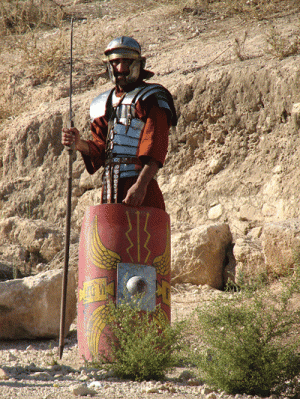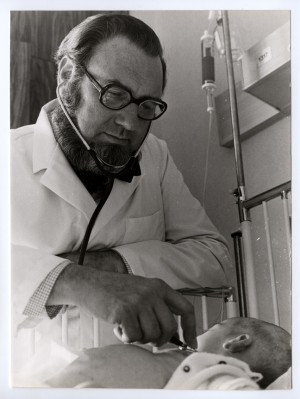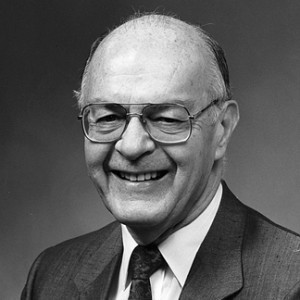Justin Taylor's Blog, page 169
March 1, 2013
Heralds of Peace Wielding the Sword of the Spirit
 Robert Plummer and John Mark Terry have edited a new book entitled Paul’s Missionary Methods: In His Time and Ours (IVP Academic, 2012), building upon Roland Allen’s classic Missionary Methods: Saint Paul’s or Ours? from a century ago.
Robert Plummer and John Mark Terry have edited a new book entitled Paul’s Missionary Methods: In His Time and Ours (IVP Academic, 2012), building upon Roland Allen’s classic Missionary Methods: Saint Paul’s or Ours? from a century ago.
IVP has given me permission to post the entire chapter of Craig Keener’s chapter, “Paul and Spiritual Warfare” (PDF)—taken from Paul’s Missionary Methods edited by Robert L. Plummer and John Mark Terry. Copyright(c) 2012 by Robert L. Plummer and John Mark Terry. Used by permission of InterVarsity Press, P.O. Box 1400, Downers Grove IL 60515-1426. www.ivpress.com.
What follows is an excerpt of his helpful discussion on “the armor of God”:
* * *
By comparing the lists in 1 Thessalonians 5:8 and Ephesians 6:14-17, we see that elements of the believer’s armor can prove interchangeable from one letter to another. That is, Paul draws on the particular items in the familiar Roman soldier’s equipment not to pair spiritual concepts with these items in a one to one correspondence, but to illustrate that we need to be spiritually equipped. Salvation or the hope of salvation is a helmet in both cases, but Paul has the breastplate of faith and love in one case, with a breastplate of righteousness and shield of faith in the other.
We should note that his images of spiritual warfare do not involve special formulas or secret techniques, but salvation, faith, love, righteousness and so on. Without having to rule out the “mystical” elements that some see in spiritual warfare at times (as in 2 Kings 6:17), Paul’s images of spiritual warfare tend to be more practical than some imagine. Most involve protective armor, and we are protected by our right relationship with God and one another.
As is also often pointed out, God’s warriors, like Roman soldiers, have protection only for the front and not the back. Soldiers who discarded their shields and fled made easy targets for pursuing enemies; Roman soldiers who marched side by side, advancing on the enemy, were considered virtually invincible.
Whereas soldiers wore some pieces of armor in other circumstances, they normally donned the helmet and breastplate only for battle. The armor depicted here, therefore, involves a spiritual warrior directly engaged in spiritual war, with the assumption that this is the believer’s normal state. . . .
What we can say for certain in Paul’s context is that we dare not wage our battle in our own strength, but by depending on God (Eph 6:10). Western Christians have grown accustomed to depending on economic resources, technology, information and everything else but God; the way to advance the kingdom, however, is by humble recognition that God does the most important work and deserves the real credit.
[Belt]
Because the first piece of armor mentioned guards the waist or loins (Eph 6:14), it refers to a “belt” or “girdle.” It may thus evoke the Roman soldier’s leather apron beneath the armor or the metal belt that guarded his lower abdomen. God’s warrior is protected partly by truth, which in the context of other virtues mentioned here may include integrity (cf. Eph 4:15, 25). For Paul, however, including in Ephesians, “truth” involves particularly the truth of the gospel, recognizing and living in the reality of God’s claims as opposed to the world’s falsehood (see Eph 1:13; 4:21, 24-25; 5:9; cf. Rom 1:18-19). Believers must live and speak consistently with God’s reality.
[Breastplate]
Paul next mentions the “breastplate” (Eph 6:14), meant to protect the chest and usually made of leather with metal over it. God himself wears “righteousness as a breastplate” in Isaiah 59:17, so he can enact justice and righteousness in a world that has abandoned it (Is 59:14-16). Part of God’s mission into which he has invited us as agents is to work for righteousness and justice, for God’s honor and the right treatment of people made in his image. Given Paul’s usual usage, however (including in Eph 4:24; 5:9), this “righteousness” is also part of the new standing and character God has given us in Christ. Only those with this status and heart before God will be pure agents of his righteousness in the world.
[Footwear]
Soldiers also would wear sandals or half boots (Eph 6:15); this was necessary preparation for battle, so that one could advance against the enemy without needing to be distracted by what one might step on. Paul applies the image to “the gospel [good news] of peace,” clearly alluding to Isaiah 52:7, where heralds bring good news of divine deliverance and restoration for God’s people. Readiness to carry the gospel is necessary for God’s warriors to advance and, as we shall see, prepares us for the one offensive weapon that Paul will include: the gospel message (Eph 6:17).
[Shield]
Roman soldiers used rectangular shields about four feet high, covered with leather. Because such shields could be vulnerable to flaming arrows, soldiers could wet their shields before battles where such projectiles were expected. As the soldiers marched together in formation, the front row’s shields covering their front and the second row’s lifted shields guarding both rows from above, they were considered virtually invulnerable to projectiles that individuals hurled against them. Greeks and Romans sometimes thought of sexual temptation in terms of fire or wounds, but the meaning is undoubtedly broader than that; Scripture already used arrows as a metaphor for attacks from the wicked, including slander (Ps 11:2; 57:4; 58:6-7; 64:3; cf. 120:2-4; Prov 25:18). Given the normal case of the Roman soldier, however, Paul might assume something about our defense that we sometimes neglect: we dare not break ranks. We must march together, protecting one another.
[Enemy]
The threat for Paul is not human, as for Roman armies, but “the evil one.” While Satan is powerful, however, Paul declares that the shield of faith is sufficient to put out the fire on his arrows. Believers should not become fearful of Satan’s attacks, but stand firm in faith. When readers think of “faith” today, because of the past two centuries of trends in philosophy we often think of a subjective feeling or of a mental ability to extinguish all doubt, both of which approaches put the focus on the believer’s effort. In Jesus’ teaching, however, the question is not how much faith one has (a mustard seed is enough), but in whom one has faith. In Paul’s letters, Jesus and God the Father are the proper objects of faith. This is not a leap into the dark, as some generalized attitude of belief would be; this is a deliberate step into the light of God’s reality. The protection afforded by faith comes not when we trust our faith, but when we trust God who is absolutely trustworthy and able to protect us.
[Helmet]
Roman soldiers wore for battle bronze (or iron) helmets with long cheek pieces (Eph 6:17). The specific phrase, “helmet of salvation,” echoes Isaiah 59:17, as in Ephesians 6:14. In the immediate context in Isaiah, this helmet referred to God acting to deliver the oppressed from the wicked (Is 59:15-16), but in the larger context of Isaiah the theme of salvation included God delivering his people and all who would turn to him among the nations (e.g., Is 46:13; 49:6; 51:5-8). The message of salvation and God’s reign is also called “good news of peace” (Is 52:7; see also Eph 6:15). That context might suggest that we participate in bringing God’s message of salvation; more directly, given Paul’s usage in 1 Thessalonians 5:8, Paul means that we are protected by means of God’s salvation.
[Sword]
The list climaxes, however, with the only offensive weapon in the soldier’s equipment that Paul will list (Eph 6:17). This limitation is not because Roman soldiers carried only one weapon; in fact they carried more, a pike or lance (or two) as well as their sword and dagger. For believers, however, there is only one weapon—God’s message—and it is logical that Paul chooses the image of the sword over the lance. The front row of an advancing legion carried heavy pikes that deterred attackers and could be thrust into them at fairly close range. Once close battle ensued, however, the heavy pikes became less practical than swords. (The sword here was the gladius, roughly 20-24 inches in length.) Paul envisions hand-to-hand combat, spiritual warfare not from afar at this point but at close range.
Paul declares that this one offensive weapon is the “sword of the Spirit, which is the word of God.” While God’s word includes Scripture (which Jesus deployed against Satan at his temptation), Paul usually uses this phrase especially for the gospel (e.g., the same term in Rom 10:8, 17; the same idea in Eph 1:13). Every other piece of equipment Paul mentions protects us; the one piece that enables us to take back ground taken by the devil is the gospel—evangelism. Too often the church lives off the benefits of past revivals, waging a merely defensive battle as the world surrounds and constricts the church. The most strategic means God has provided us of reversing the direction of influence is for us to bring the good news of peace and salvation to the world, through evangelism. Evangelism is the one element of spiritual warfare that takes back Satan’s possessions. Without it, spiritual warfare is incomplete. Likewise, we are kept safe by truth, righteousness and salvation.
[Conclusion]
Heralds of peace, bearing the sword of the Spirit, will not always be well received. People in antiquity understood that heralds were granted diplomatic immunity, and any mistreatment of an ambassador signaled an act of war against the sender. Paul, however, is “an ambassador in chains” (Eph 6:20). Rome’s earthly empire was not willing to submit to God’s greater kingdom. Yet past earthly empires, including Rome, now lie in the dust, and God’s kingdom spreads, as promised, among all peoples. Jesus will return, and God’s kingdom will prevail. In the meantime, it often spreads, not through conquest, but through its agents’ suffering, as in Paul’s case.
February 28, 2013
What Biographies of Luther Are Best?
I mentioned last time that Luther’s life is central to reading his theology. His thinking, while remarkably consistent, does develop over time. He nuances his positions on various issues as he faces challenges which his own Reformation theology generated. Thus, knowing what issues he is facing and when is important when reading him.
The benchmark biography of Luther in English is the three volumes by the German historian, Martin Brecht. These look rather forbidding: nearly 1400 pages of text, excluding notes. Nevertheless, the translation is very readable and the narrative moves at a good pace, such that the reader’s interest is maintained and the basic storyline remains very clear.
For those with less time to spare, there is the classic biography by Roland Bainton, Here I Stand. It was my first introduction to the Reformation and remains a favourite. Bainton was a radical thinker himself, not doctrinally sympathetic to Luther but rather emotionally so: he knew what it was like to be a beleaguered outside, a man at war with his times. Thus, he writes on Luther with considerable passion.
A more recent short biography is that by the distinguished Lutheran historian, Martin Marty, in the Penguin Brief Lives series. This is fun too: well-written and peppered with little anecdotes of Luther’s personal life.
To these I would also add Robert Kolb’s Martin Luther: Confessor of the Faith, a relatively short but learned and extremely informative introduction to Luther’s life and major theological contributions.
Readers should also consult Heiko Oberman’s Luther: Man between God and Devil for an example of a brilliant, if at times speculative, account of Luther’s life by the most significant Reformation scholar of the last fifty years.
You can read the whole thing here, which also includes recommended reading from Luther himself and by others on his theology.
“Atheism Is to Theism as Not Collecting Stamps Is to Stamp Collecting”
 So writes Anthony Grayling in his book being released next month in the UK, The God Argument: The Case Against Religion and for Humanism.
So writes Anthony Grayling in his book being released next month in the UK, The God Argument: The Case Against Religion and for Humanism.
Peter Hitchens reviewed the book for The Spectator and responds:
At this point, we are supposed to enjoy a little sneer, in which the religious are bracketed with bald, lonely men in thick glasses, picking over their collections of ancient stamps in attics, while unbelievers are funky people with busy social lives.
But the comparison is flatly untrue. Non-collectors of stamps do not, for instance, write books devoted to mocking stamp-collectors, nor call for stamp-collecting’s status to be diminished, nor suggest — Richard Dawkins-like — that introducing the young to this hobby is comparable to child abuse. They do not place advertisements on buses proclaiming that stamp-collecting is a waste of time, and suggesting that those who abandon it will enjoy their lives more.
Professor Grayling is too pleased with himself to have realised this. Intoxicated with amusement at his own dud metaphor, he asks: ‘How could someone be a militant non-stamp-collector?’ I rather think he has written the manual for anyone who might like to take up this activity.
This work is full of negative, petti-fogging narrowness, devoid of sympathy for opponents, empty of generosity or modesty, immune to poetry or mystery. Seeking enjoyment in its pages is like trying to quench your thirst with dry biscuits. The rudest thing that I can say about it is that it is pretty much the same as all the other anti-God books. Like Scandinavian crime series on TV, these volumes trundle off the production lines every few months, asserting their authors’ enlightenment and emitting a nasty undertone of spite and intolerance.
You can read the whole thing here.
February 26, 2013
What Is Biblical Inerrancy?
Kevin Vanhoozer provides a helpful introduction:
What is explicitly expressed in the doctrine of biblical inerrancy, however, is not a theological novelty so much as an articulation of what was implicitly, and virtually always, presupposed through most of church history.
What then does the doctrine of biblical inerrancy explicitly articulate? We can refine our provisional definition of inerrancy in terms of truthfulness as follows: The inerrancy of Scripture means that Scripture, in the original manuscripts and when interpreted according to the intended sense, speaks truly in all that it affirms.
February 25, 2013
C. Everett Koop (1916-2013)
 Former Surgeon General C. Everett Koop went to be with the Lord earlier today, February 25, 2013.
Former Surgeon General C. Everett Koop went to be with the Lord earlier today, February 25, 2013.
Born in Brooklyn, he earned the A.B. degree from Dartmouth (1937) and his medical degree from Cornell (1941). Just a year after receiving the Doctor of Science (Medicine) from the University of Pennsylvania (1947), he became Surgeon-in-Chief of Children’s Hospital of Philadelphia.
It was there that he met Francis and Edith Schaeffer (1948). In his new book Schaeffer on the Christian Life: Countercultural Spirituality, William Edgar tells the story:
[The Schaeffers' daughter] Priscilla contracted a strange illness, causing her to vomit violently. At the Philadelphia Children’s Hospital the doctors were baffled. A thirty-two-year-old physician named C. Everett Koop walked into the room, examined Priscilla, and diagnosed her with “mesenteric adenitis,” a disease he had just been studying. He had learned that most often the condition could be cured by the removal of the appendix, for reasons not clear to medical science. Edith mentioned to Dr. Koop that they were moving to Switzerland to become missionaries. Koop had just become a believer through the ministry of Tenth Presbyterian Church on Seventeenth and Spruce Streets. He performed the operation himself. Just before he wheeled Priscilla into the operating room, a telegram came in from Fran, who was traveling in Nashville, saying, “Dear Priscilla, Remember underneath are the everlasting arms. Love, Daddy.” Dr. Koop was deeply moved by the marvel of this kind of faith. Later, Fran [i.e., Francis Schaeffer] and he would meet and forge a friendship that led, among other things, to casting the film Whatever Happened to the Human Race?
Years later Dr. Koop explained during a Wheaton interview the way in which he would bring his Christian worldview to bear upon his own view of surgery and care for the family. He would always tell the families:
Let me assure you that if I thought that I was walking into that operating room in my own steam, my own power, my own knowledge and was going to operate upon your child—and its survival depended upon me—I wouldn’t open the door. I believe that I am a servant of the Lord and that I am going to that operating room with gifts that he has given me. But your child is in his hands, and he will guide me, and I will let you know everything I can about the future of your child.
Koop himself lost a child, David, who was a junior at Dartmouth when he died during a mountain climbing accident.
Dr. Koop became Professor of Pediatric Surgery at the University of Pennsylvania’s School of Medicine in 1959 and Professor of Pediatrics in 1971.
In March of 1981 President Ronald Reagan appointed him Deputy Assistant Secretary for Health, U.S. Public Health Service (PHS), and later that year as Surgeon General.
His tenure as Surgeon General is widely remembered for his work related to abortion, tobacco, HIV/AIDS, and the rights of babies born with birth defects and handicaps. He served as Surgeon General until 1989.
February 23, 2013
Journalism, Justice, and Reporting on Marriage
Mollie Hemingway has an important post that all journalists should read. The occasion is the ombudsman at the Washington Post reprinting and empathizing with one of their reporters who revealed in a series of emails that journalists think people of faith who advocate for traditional marriage should have their arguments dismissed at the same level as racists. The argument is that journalism is about justice, and “religionists” are being unjust, and therefore they should not be given a respectful hearing.
Mollie’s whole piece is worth reading. Here’s her application:
Every reporter — no matter the beat, no matter how much in the tank for redefining marriage, no matter how close-minded they’ve been to this point — every reporter needs to stop what they’re doing and read What Is Marriage?
It’s a very easy-to-read book that succinctly explains the traditionalist arguments surrounding marriage. Refusing to learn the arguments of those who oppose changing the law must end. It simply must end. The ignorance and bigotry with which reporters have covered this topic is a scandal. It’s destroying civil political discourse, it’s embarrassing and can’t continue.
Reporters don’t need to change their deeply-held biases in favor of changing marriage law. But they do need to learn even a little bit about the arguments of those who oppose such a change.
No reporter working today should ever make the error of comparing arguments against marriage redefinition with anti-miscegenation laws. It’s clownish and easily disputed.
I thank Pexton and this unnamed reporter for revealing their ignorance and bigotry when it comes to coverage of this topic. It is helpful to have this transparency. But the solution lies not with zealous indoctrination by media types about how “fairness” requires redefining marriage. The solution to the problem of the bigoted way that reporters handle this topic lies with reporters themselves. Reporters: open your mind to the actual (not imagined) arguments of your opponents. Learn to report their views as accurately as you would want someone to report your own beliefs.
When it comes to news writing — and not voting or op-eds — stop thinking of people who retain traditional arguments on the institution of marriage as your opponents. And, most importantly, start doing your jobs.
Of course, the admonition does not just apply to secular journalists who are skeptical of tradition and religion, but also to Christians in journalists who seek to understand and to report with excellence.
February 22, 2013
Should Christians Abstain from Lent?
 There’s a renewed interest in Lent, even by low-church evangelical Protestants.
There’s a renewed interest in Lent, even by low-church evangelical Protestants.
For the latest TGC podcast Collin Hansen and Mark Mellinger talk with Ligon Duncan about the origins, theology, and practice of Lent.
Ken Stewart, a history professor Covenant College, weighs in with his own analysis, offering some “Nagging Questions concerning Lent.”
The primary objection to our current rush to re-instate Lent is this: too many evangelical Christians are considering this (and some related questions) with what might be called a “liturgical inferiority complex.” While we do not shout this from the roof tops, we quietly admit to ourselves that our evangelical Protestant tradition as it now exists is somewhat homespun, even threadbare and that it stands in need of being augmented by resources taken from the past. While the Christian past has plenty of riches which may be drawn upon, the point is this: these are not best “tried on for size” from the standpoint of felt inferiority. What is needed (and, I contend is currently in short supply) is healthy critical judgment towards a whole host of things (of which Lent is but one) that might be thought to be “just the thing” to rectify our evangelical Protestant deficiencies.
Agree or disagree, these Reformed arguments and questions are worth listening to and considering.
5 Purposes of Moral Education
Moral education serves at least five purposes, according to J. Budziszewski:
It reinforces what we know, because the mere fact that we know something is wrong is not enough to keep us from doing it.
It elicits what we know, because we know many things without knowing that we know them.
It guards what we know, because although deep conscience cannot err, surface conscience can err in all too many ways.
It builds upon what we know, because only the most general and basic matters of right and wrong are known to us immediately, and second knowledge must be added to first.
Finally, it confronts us about what we know, because sometimes we need to be told “You know better.”
—J. Budziszewski, What We Can’t Not Know: A Guide, rev. ed. (Ignatius Press, 2011) p. 124 [my emphasis and formatting].
February 20, 2013
A Plea from Daisy’s Mom
 A plea to parents from Kate Merrick, whose 8-year-old daughter Daisy is now with Jesus:
A plea to parents from Kate Merrick, whose 8-year-old daughter Daisy is now with Jesus:
Love your babies, your husbands, mothers, sisters.
Love each day like it’s your last.
All you mamas out there, you have been entrusted with the precious gift of a human life who depends on you.
Enjoy your gift.
Breathe in the scent of your child’s hair, breath.
Let them cook with you and make a mess of the kitchen.
Play hide and seek with them, build sand castles with them, take them on picnics, read to them!
Listen to them, value and respect them, never shame them.
Your words they will carry with them their whole life and you have the power to give them wings or stunt their growth.
Motherhood can be tough but it’s worth it.
It can be exhausting, boring, tedious, but never for long.
You blink and they’re grown.
It has been my honor and privilege to love Daisy these last 8 years.
I’m thankful for every minute; the joyful and the terrible alike.
Howard Hendricks (1924-2013)
 Howard G. Hendricks, known to the Dallas Theological Seminary community and beyond simply as “Prof,” saw his Lord face to face this morning. He was 88 years old.
Howard G. Hendricks, known to the Dallas Theological Seminary community and beyond simply as “Prof,” saw his Lord face to face this morning. He was 88 years old.
Hendricks received a bachelor’s degree from Wheaton College (1946) and a Master of Theology from Dallas Theological Seminary (1950). From there he and his Jeanne moved to Fort Worth, Texas, where he became the pastor of Calvary Independent Presbyterian Church (now Calvary Bible Church). In the fall of 1951 he began teaching twice a week at Dallas. After one year he resigned to pursue a doctorate at Yale. But the founding president of the seminary, Lewis Sperry Chafer, died before the 1952 school year began, and theology department chairman John Walvoord was appointed president. Walvoord contacted Hendricks and asked him to delay his doctorate in order to teach at the seminary full time. He would eventually go on to earn a D.D. from Wheaton College Graduate School in 1967 while continuing to teach at Dallas. He taught at the school for a remarkable 60 years before officially retiring.
Hendricks’ bestseller, Living by the Book: The Art and Science of Reading the Bible (Moody Press, 1991), helped hundreds of thousands of laypeople learn the inductive method of studying the Bible.
For more on Howard Hendricks, and especially on the personal impact he made on countless lives, see this helpful write up from Dallas Seminary.
Justin Taylor's Blog
- Justin Taylor's profile
- 44 followers



